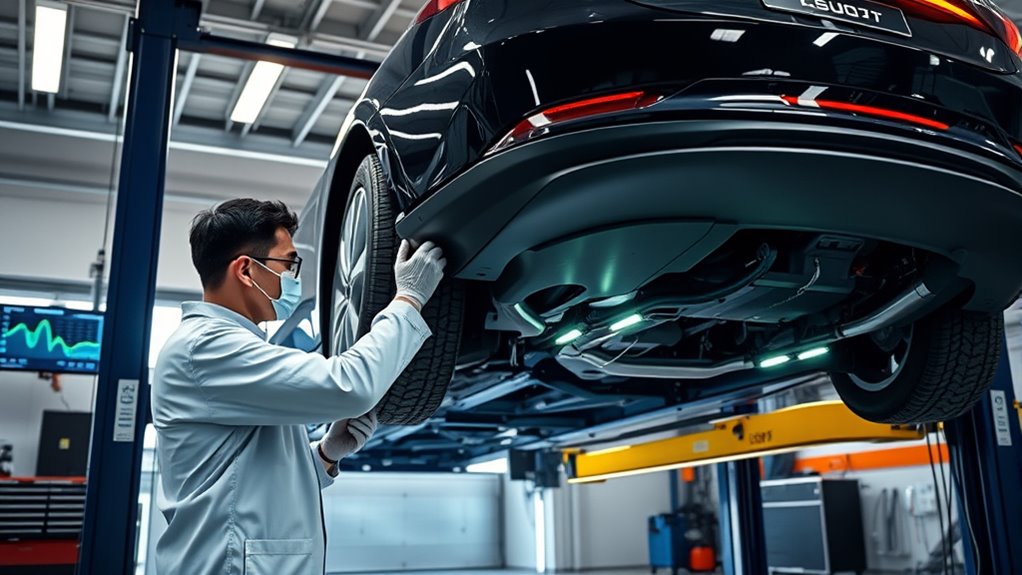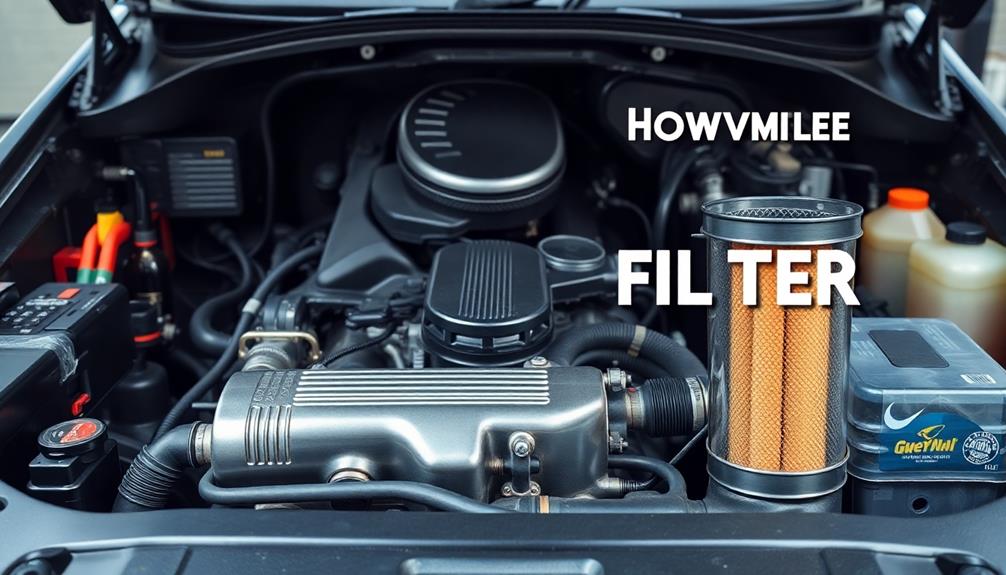As EV technology advances, maintenance shifts focus toward battery health and proper charging habits. You should avoid frequent full charges or complete drain, sticking to 20-80% levels. Use slower chargers in good temperatures and keep an eye on software updates that optimize battery performance. Monitoring your battery status regularly helps prevent issues early. By following these evolving practices, you’ll extend your vehicle’s lifespan. Discover more ways to keep your EV in top shape as these changes unfold.
Key Takeaways
- Shift focus from traditional maintenance to battery health monitoring and software updates.
- Prioritize gentle charging practices between 20% and 80% to preserve battery longevity.
- Use Level 2 or slower chargers and avoid extreme temperatures during charging sessions.
- Regularly update vehicle software to enhance battery management and detect issues early.
- Monitor battery performance through dashboards or apps to optimize charging habits and vehicle lifespan.

Ever wondered what it takes to keep your electric vehicle running smoothly? Maintaining an EV isn’t just about routine check-ups; it’s about understanding how to care for its core components—especially the battery. Your battery’s health is central to your vehicle’s performance and longevity. Unlike traditional cars, EVs rely heavily on battery condition, so paying attention to how you charge can make a significant difference. Proper charging protocols help prevent unnecessary wear and tear, ensuring your battery stays in excellent shape for longer periods. For example, avoiding frequent charging to 100% or letting the battery drain completely can reduce its lifespan. Instead, sticking to recommended charge levels—like keeping the charge between 20% and 80%—helps maintain battery health. Many EV manufacturers provide guidelines on the ideal charging practices, and following these can save you money on replacements and improve overall efficiency.
You should also be mindful of charging speed. Fast chargers are convenient but can generate more heat, which might accelerate battery degradation if used excessively. Whenever possible, opt for Level 2 chargers or slower charging methods for everyday use. This gentle approach reduces thermal stress on the battery cells and helps maintain their capacity over time. Additionally, paying attention to your charging environment is important. Avoid exposing your vehicle to extreme temperatures when charging, as heat and cold can negatively impact battery health. If your car has a preconditioning feature, use it to warm or cool the battery before charging, especially in extreme weather conditions. Incorporating proper maintenance practices can further extend your EV’s battery life and overall performance.
Regularly updating your vehicle’s software can also maximize battery management. Manufacturers often release updates that improve charging algorithms and monitor battery health more effectively. This proactive step can help you identify potential issues early and ensure your EV operates at peak performance. Don’t forget to keep an eye on your vehicle’s dashboard or app notifications about battery status or alerts. These signals can guide you if there’s an underlying problem or if you need to adjust your charging habits.
Frequently Asked Questions
How Often Should I Replace the EV Battery?
You should replace your EV battery when it experiences significant degradation, usually around 8 to 15 years or after 100,000 to 200,000 miles, depending on usage and battery quality. Replacement intervals are guided by the battery’s health and warranty coverage. Regularly monitor your battery’s performance, and consult your manufacturer’s recommendations to guarantee maximum range and safety. Proper maintenance can extend the lifespan and delay the need for replacement.
Are EV Tires Different From Traditional Car Tires?
You bet, EV tires are different from traditional car tires. You need to watch for tire wear and tread depth more closely since EVs are heavier and have instant torque. These factors can cause faster tread wear, so regular checks are essential. High-performance tires designed for EVs offer better grip and efficiency. Don’t let small issues snowball; keep an eye on your tires to stay safe and maximize your vehicle’s range.
What Is the Lifespan of an EV Charging Port?
Your EV charging port typically lasts around 8 to 10 years, but it can vary based on usage and climate. Make certain your charging station remains compatible with your vehicle, as outdated connectors may cause issues. Regular software updates from manufacturers help maintain peak performance and safety. Proper care and timely inspections can extend the lifespan, guaranteeing you get the most out of your charging port and avoid unexpected replacements.
Do EVS Require Special Fluids or Lubricants?
You might be surprised, but EVs generally don’t require special fluids or lubricants for regular maintenance. Instead, focus on battery cooling systems that often use coolant to keep your battery at ideal temperature. While lubrication requirements are minimal, it’s wise to check your vehicle’s manual for specific guidance. Proper maintenance ensures your EV stays efficient and reliable, without the hassle of complex fluid changes like traditional vehicles.
How Can I Improve My Ev’s Overall Efficiency?
To improve your EV’s overall efficiency, focus on maintaining proper battery cooling to prevent overheating and optimize performance. Use regenerative braking effectively to recover energy during deceleration, extending your range. Keep your tires properly inflated for minimal rolling resistance, and reduce unnecessary weight and aerodynamic drag. Regularly check your vehicle’s systems and software updates to guarantee everything runs smoothly, maximizing energy use and extending your EV’s lifespan.
Conclusion
As you navigate the road ahead, remember that EV maintenance is like tending a delicate garden—requiring care, patience, and awareness. The evolving landscape symbolizes growth and adaptation, reminding you that your vehicle’s health mirrors your own willingness to evolve. Embrace these changes as a symbol of progress, steering confidently toward a sustainable future. In tending your EV, you nurture not just a machine, but a world unfolding into brighter, greener horizons.









